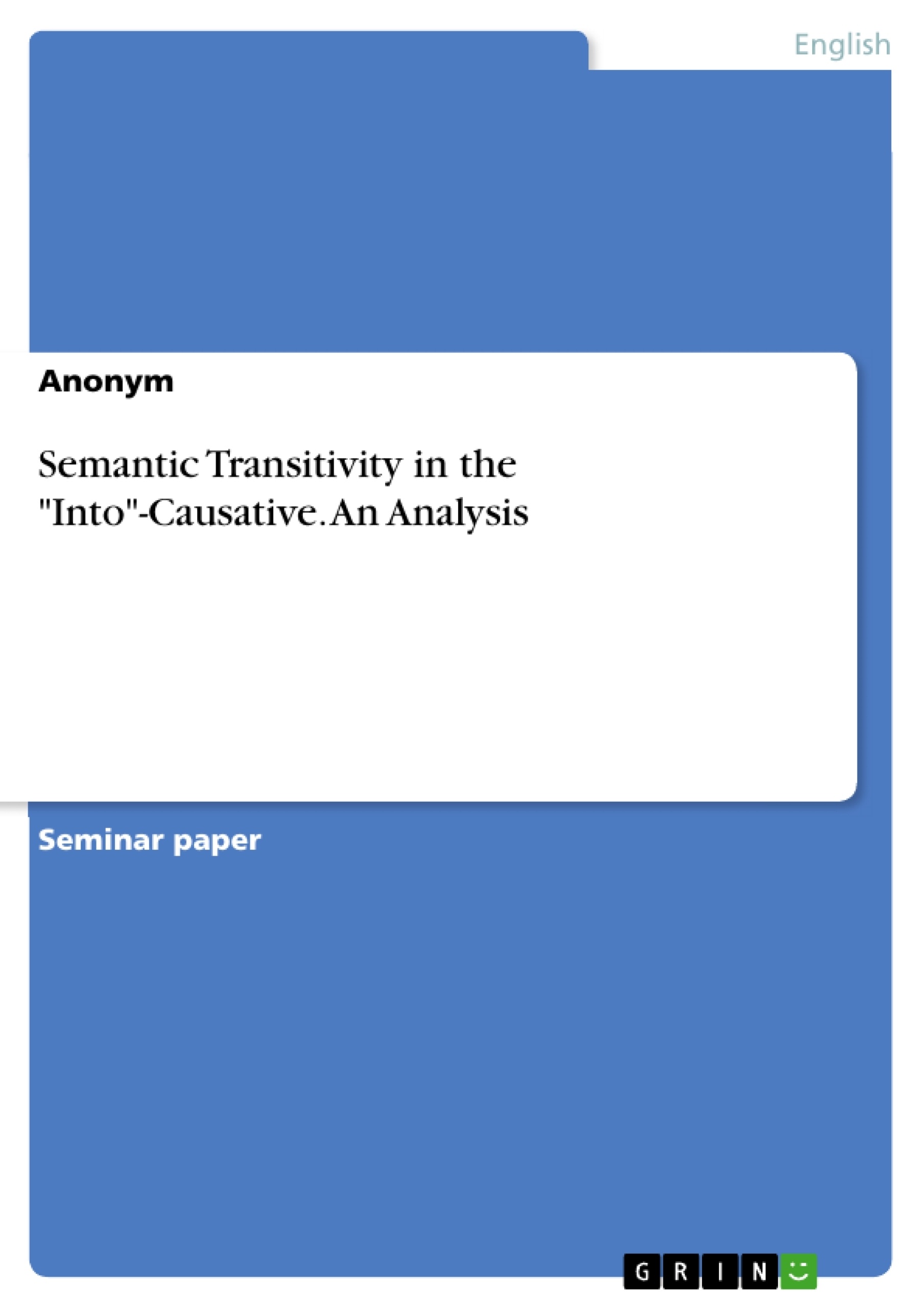This essay discusses the into-causative, a rather modern subject in linguistics, and its semantic transitivity. The author argues that by using Hopper and Thompson’s transitivity criteria it is not only possible to analyse the degree of transitivity of the into-causative but also to get insights in which contexts certain transitivity patterns occur.
In order to classify his findings, the author first examines these constructions with respect to Hopper and Thompson’s features of ‘Mode’ and ‘Affirmation’. Afterwards, these features are further classified, and it is shown whether there are features that attract each other, also including the aspect of reflexiveness and voice. As a last step he illustrates the degree of semantic transitivity of the into-causative, using the features analysed in this study.
Table of Contents
1. Introduction
2. Semantic Transitivity based on Hopper and Thompson (1980)
3. Transitivity Analyses on other Causative Constructions
4. Lexical Approaches to the into -Causative
5. Data and Method
6. Analysis and Results
6.1 Realis vs Irrealis into -Causatives
6.2 Occurrence of Irrealis features
6.3 Co-Occurrences of Irrealis Features
6.4 Co-Occurrences of Negation + Modal +
6.5 Overall Co-Occurrences of Detransitivisation Features
7. Conclusion
References
- Quote paper
- Anonymous,, 2019, Semantic Transitivity in the "Into"-Causative. An Analysis, Munich, GRIN Verlag, https://www.grin.com/document/1361406
-

-

-

-
Upload your own papers! Earn money and win an iPhone X. -

-
Upload your own papers! Earn money and win an iPhone X. -

-
Upload your own papers! Earn money and win an iPhone X. -

-
Upload your own papers! Earn money and win an iPhone X. -

-
Upload your own papers! Earn money and win an iPhone X. -

-
Upload your own papers! Earn money and win an iPhone X.

